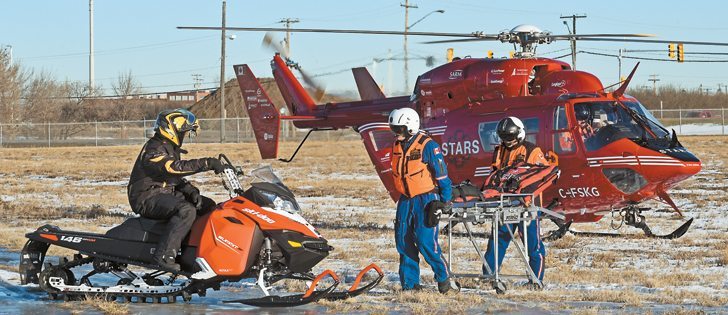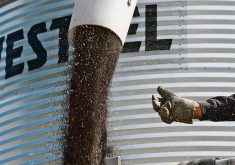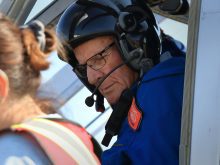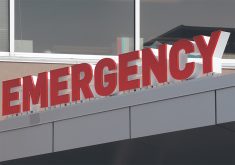Garfield Beaudry was chopping wood for the winter near Raymore, Sask., but feeling poorly that September day in 2012.
Later, when friends from England arrived for a dinner date, he fell to the ground unconscious after suffering a heart attack.
After the 911 call, his acreage became a bevy of activity as first responders, police, firefighters and a ground ambulance arrived. The Shock Trauma Air Rescue Service (STARS) helicopter landed on site and kept his heart going while flying him to the Regina General Hospital in less than 30 minutes.
Beaudry credits the entire team with his positive outcome and his good health today.
“It was a combination of all these organizations working hand in glove that ended up with the result. I’m still here,” said Beaudry, a retired heavy-duty mechanic who lives 100 kilometres from a major city.
“Doctors who attended me at the Regina General said without them, I wouldn’t be here, I’d have been buried.
He’s also grateful for his visitors that day.
“Because I live alone, I’m not sure how long it would have been before someone found me,” he said.
Read Also

AgCanadaTV: Your agriculture news recap for Oct. 24, 2025
https://youtu.be/mp5FRLcmGuA Is Canadian Ag ready to pivot? Risk and change are inevitable in agriculture, but the need for change is…
STARS gives critically ill patients like Beaudry in remote and rural locations better access to immediate care.
In emergency medicine, the golden hour refers to the time following a traumatic injury when prompt medical treatment can help prevent death.
Cindy Seidl, base director for STARS in Saskatoon, said patients benefit from rapid stabilization and transport to treatment at trauma centres.
“Whenever someone is critically injured, we talk about the golden hour. The quicker we can get patients to a trauma centre, the better the outcomes are,” said Seidl.
“The benefit of STARS is that we’re able to land on the scene of the farming accident right on the field and can take the patient from the scene of the accident to the trauma centre,” she said.
That means flying to the rooftop of Regina’s General Hospital or to the University of Saskatchewan campus in Saskatoon where Royal University Hospital is a short drive away.
The Children’s Hospital of Sask-atchewan, now under construction beside RUH, is expected to include a helicopter landing pad.
Accidents involving machines account for most of the agriculture-related cases seen by STARS each year.
“You always know come spring and fall when farmers are busy and the weather is good … we’re anticipating we’re going to have a busy weekend,” said Seidl.
“It’s a brief lapse, taking a short cut and you end up in a bad situation.”
Seidl hopes to see farm accidents continue to decline but knows the reality of farm work.
“At the end of the day. unfortunately, sometimes bad things do happen, and we just want to be available to help out and support rural people and health-care providers in their greatest time of need,” she said.
Seidl, a veteran of emergency rooms and fixed wing and helicopter rescues, keeps her emotions in check for such incidents with support from colleagues, friends and family.
“We look after each other,” said Seidl.
“I just need to do my best to minimize the impact.… At the end of the day, I don’t get to decide who lives and dies. I’m not God. If I know through my training we’ve given that patient the best possible chance, then that’s what helps me get through those difficult times.”
STARS is a relative newcomer to Saskatchewan, arriving in 2012, but Saskatchewan Air Ambulance based in Saskatoon has been transporting patients in remote and northern communities for 70 years.
STARS missions include two pilots and a nurse-paramedic team. Physicians drawn from emergency rooms and intensive care units are on call and will join the crew if the case requires it.
Most were for medical emergencies, followed by vehicle collisions, trauma, recreational activities and industrial-workplace accidents. Agriculture-related accidents accounted for two percent of these missions.















